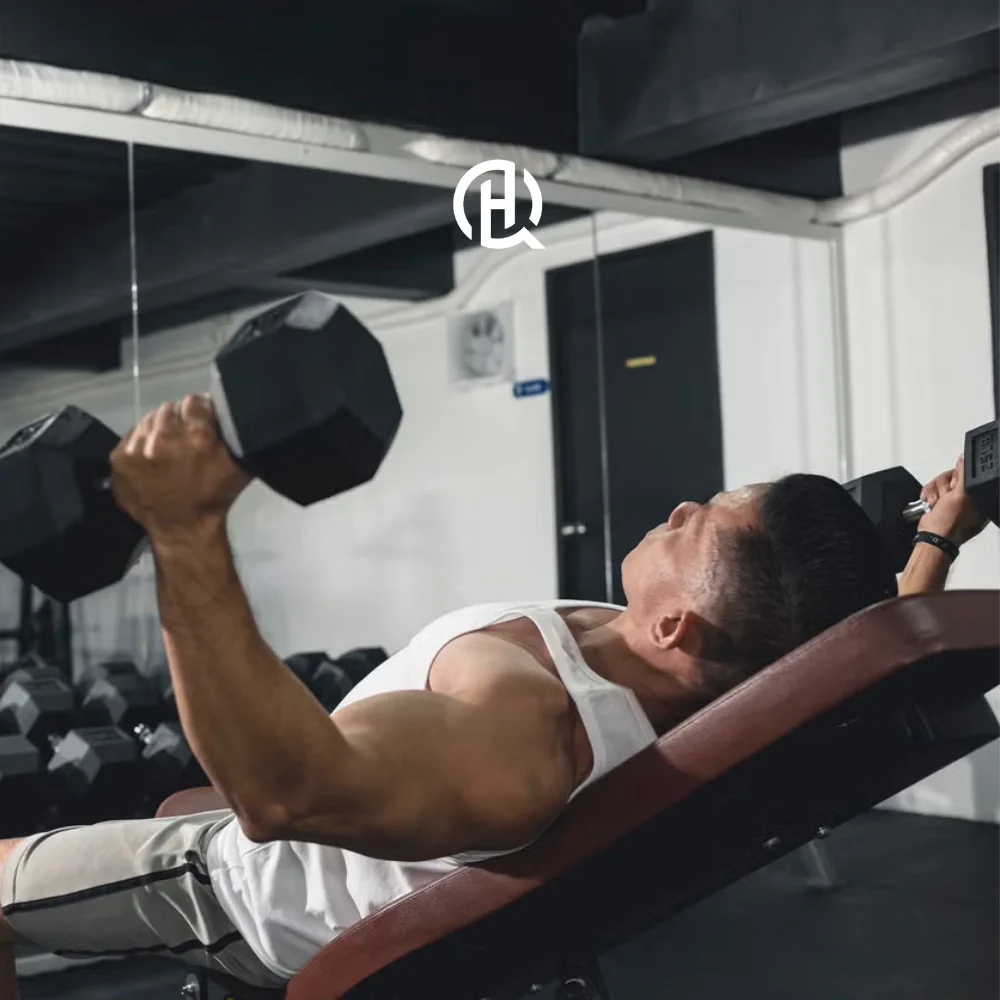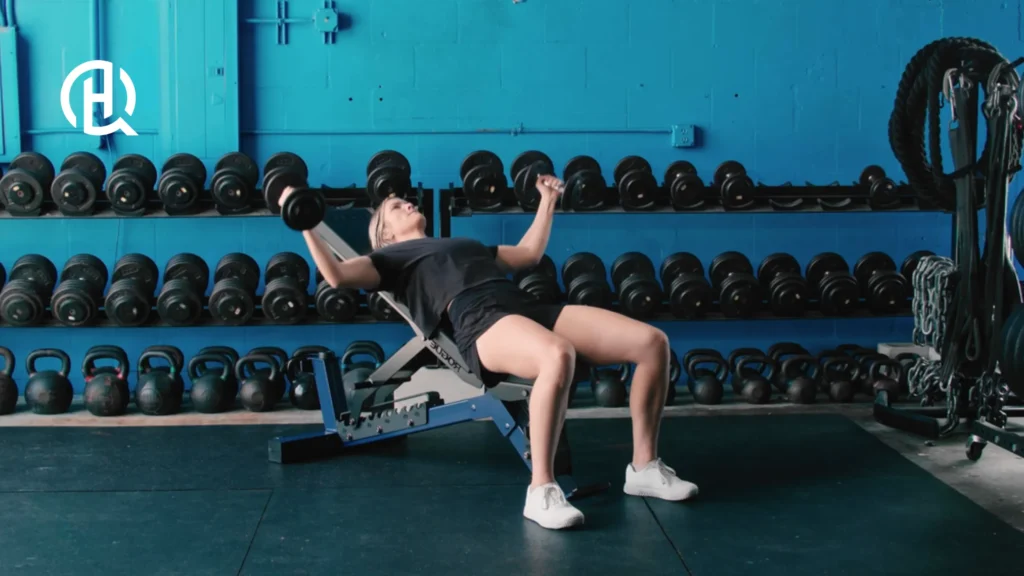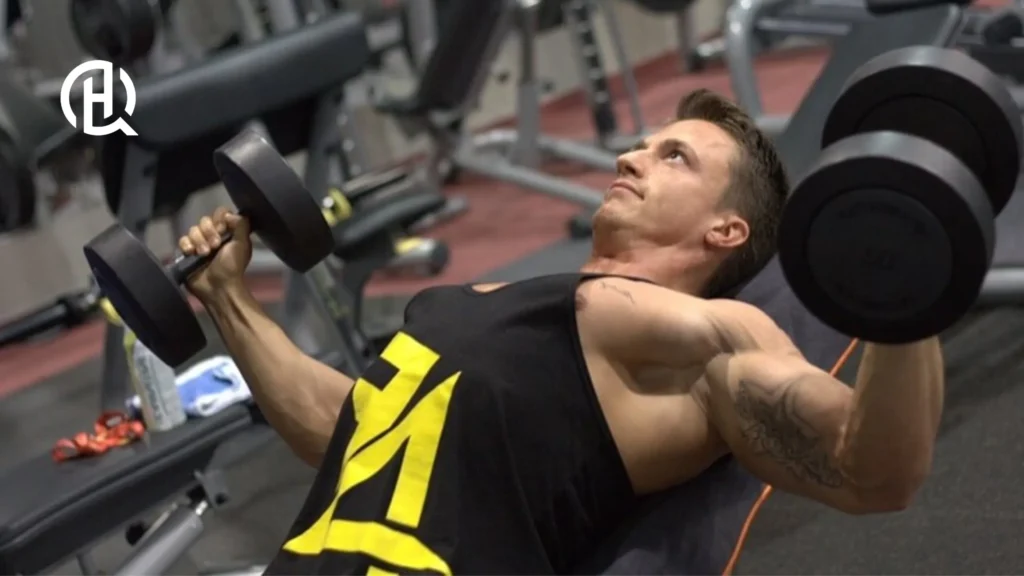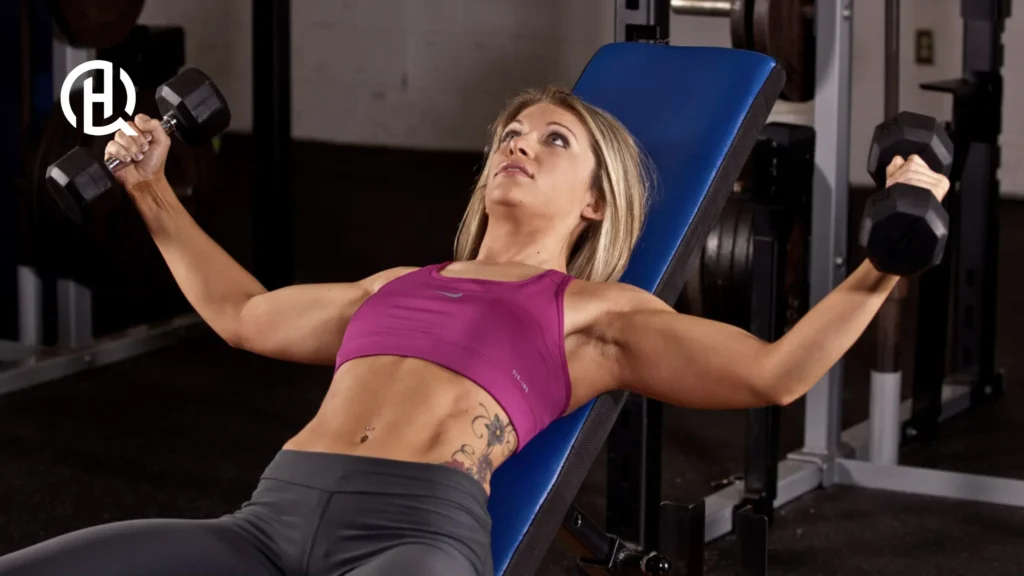

Want to get stronger, leaner, and take your fitness to the next level? Explore our workout programs now!
From the barbell bench press to the pec deck, numerous gym exercises can help you improve chest definition and work on a more developed upper body. Does that mean you can snub the less-known incline dumbbell fly? No.

Albeit neglected by some, this classic chest exercise has a variety of benefits that cannot be overlooked, including outstanding muscle stretching (provided by the wide-arc motion of the pectorals).
You know what that means, right? You really need to learn how to pull off the perfect incline dumbbell fly!
We’re going to tell you how to perform the ideal incline dumbbell fly by focusing on positioning, movement, and common mistakes to avoid.
For the warm-up, please feel free to check the warm-up routine of the incline dumbbell bench press, as it also works perfectly for the incline dumbbell fly. In short, do lighter sets with the incline dumbbell fly.

Before making your first move, you need to nail positioning. These are the positioning essentials of the incline dumbbell fly:

Fly movements are sui generis because they’re particularly risky and demand even more control than usual.
Before any rep, consider the key aspects of the incline dumbbell fly movement:
Some of these mistakes are bonafide classics, but they’re always worth mentioning:

We have already told you how to perform the ideal dumbbell fly, so do you really need to learn about the incline dumbbell fly?
Truth be told, it wont make much of a difference. The most important thing is how you feel. Are there pain assosiated with the flat fly, try the incline. Does the flat fly feel better and give you a greater pump, do that instead.
While we love fly exercises — we know that having a healthy body and hitting your fitness goals isn’t just about exercising. In fact what you eat is a huge factor.
We didn’t start as experts, so we understand what it takes to fuel your fitness journey and get you the kind of results you’ve always deserved. Check our professional workout programs and start right now.